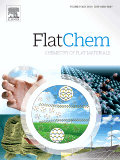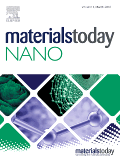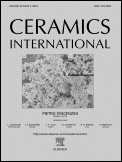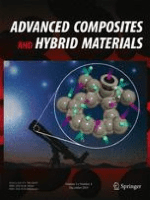
JOURNAL OF SOL-GEL SCIENCE AND TECHNOLOGY
metrics 2024
Pioneering Research in Materials Science
Introduction
JOURNAL OF SOL-GEL SCIENCE AND TECHNOLOGY, published by Springer, is a vital resource within the interdisciplinary fields of materials science and engineering, focusing on innovative research related to sol-gel processes and applications. With a rich publication history spanning from 1993, this journal enables the dissemination of cutting-edge findings in biomaterials, ceramics, and composites, ranking impressively across various categories—Q3 in Biomaterials and Q2 in several other materials-related fields. The journal's commitment to quality research is reflected in its Scopus rankings, particularly notable in the categories of Condensed Matter Physics and Materials Chemistry. Researchers and professionals leveraging the insights from this journal are supported through its comprehensive scope, which bridges theoretical foundations with practical applications, advancing knowledge and fostering collaboration among academics and industry leaders alike. As a non-open access journal, it is essential for subscribers and institutions to engage deeply with the latest advancements documented within its pages, underscoring the journal's role in shaping the future of sol-gel science and technology.
Metrics 2024
 0.45
0.45 2.30
2.30 2.50
2.50 102
102Metrics History
Rank 2024
Scopus
IF (Web Of Science)
JCI (Web Of Science)
Quartile History
Similar Journals

FlatChem
Advancing the Frontiers of Materials ScienceFlatChem, an esteemed journal published by ELSEVIER, serves as a premier platform for disseminating high-quality research in the dynamic fields of ceramic and composite materials, electronic and optical materials, materials chemistry, and surfaces, coatings, and films. Since its inception in 2017, the journal has garnered a robust reputation, evidenced by its rank in the top quartile (Q1) across multiple categories, including a commendable rank of #25/127 in Ceramics and Composites and #49/284 in Electronic, Optical and Magnetic Materials. With a focus on pioneering advancements and innovative methodologies, FlatChem not only highlights cutting-edge research but also promotes collaboration and knowledge exchange within the scientific community. The journal’s impact is underscored by its impressive rankings in Scopus, marking it as a vital resource for researchers, professionals, and students aiming to stay at the forefront of materials science. As an open-access journal, it ensures that groundbreaking findings are readily accessible, fostering a broader understanding and application of materials innovation worldwide. The journal is based in the Netherlands, with its headquarters located at RADARWEG 29, 1043 NX AMSTERDAM, NETHERLANDS. Join the vibrant community contributing to FlatChem and engage with the forefront of material advancements.

Emergent Materials
Connecting Science and Sustainability through Innovative Research.Emergent Materials is a leading journal in the fields of biomaterials, ceramics, composites, and environmental science, published by SpringerNature. With an ISSN of 2522-5731 and an E-ISSN of 2522-574X, this journal serves as a crucial platform for researchers and professionals seeking to publish their findings on innovative materials that drive advancements across various applications. Renowned for its impactful contributions, Emergent Materials currently holds a Q2 ranking in Biomaterials and Waste Management, and a prestigious Q1 ranking in Ceramics and Composites for 2023, showcasing its excellence in these dynamic fields. Positioned within Switzerland, the journal supports a wide array of open access research initiatives, allowing for greater dissemination and accessibility of critical scientific knowledge. Spanning over the years 2018 to 2024, the journal aims to publish groundbreaking studies that address global challenges in sustainability, energy, and material disposal. With an impressive Scopus ranking highlighting its impactful presence, generate compelling insights and stay at the forefront of material sciences with Emergent Materials.

Materials Letters-X
Pioneering Rapid Discoveries in Material ResearchMaterials Letters-X, published by ELSEVIER, is an esteemed open-access journal dedicated to the rapid communication of research in the fields of Condensed Matter Physics, Materials Science, Mechanical Engineering, and Mechanics of Materials. Launched in 2019, this journal has quickly established itself within the academic community, achieving Q3 quartile rankings in several categories according to the 2023 metrics. The journal's impactful contributions are reflected in its Scopus rankings, notably within Mechanical Engineering (Rank #308) and Mechanics of Materials (Rank #199). The open-access model promotes widespread dissemination and accessibility, ensuring that cutting-edge advancements in material science are readily available to researchers, professionals, and students worldwide. As it continues to grow, Materials Letters-X aims to inspire innovation and collaboration across disciplines, making it a pivotal resource for those engaged in material research and applications.

Materials Today Nano
Exploring Innovations in Nano-Science and EngineeringMaterials Today Nano, published by Elsevier, is a premier academic journal dedicated to the forefront of nano-materials research, encompassing innovations and advancements in biomaterials, condensed matter physics, electronic, optical, and magnetic materials, as well as materials chemistry. With an impressive Q1 ranking across multiple categories, including biomaterials and materials chemistry, this journal serves as a essential platform for researchers, professionals, and students aiming to contribute to and stay informed on cutting-edge developments that push the boundaries of materials science. Its open access model allows for wider dissemination of high-impact findings, ensuring that the research reaches a global audience. Operating from the United Kingdom, Materials Today Nano plays a vital role in fostering interdisciplinary collaboration and advancing scientific understanding in this rapidly evolving field.

Ceramics International
Discovering the art and science of ceramics.Ceramics International is a premier journal published by ELSEVIER SCI LTD, focusing on advancing the field of materials science with a specific emphasis on ceramics and composites. With an impressive impact factor and a top-tier standing in several critical categories, including Q1 rankings in Ceramics and Composites, Electronic, Optical and Magnetic Materials, and Materials Chemistry, this journal serves as a crucial resource for researchers and professionals alike. Established in 1981, it has consistently showcased cutting-edge research in various domains, including surfaces, coatings, and process chemistry technologies, making it invaluable for those advancing theoretical and practical knowledge in these areas. While access is through subscription, the journal’s rich content, profound insights, and rigorous peer-review process ensure high-quality articles that contribute meaningfully to the scientific community. By fostering innovation and collaboration through rigorous research, Ceramics International stands out as an authoritative source for those dedicated to the evolution of materials science.

BULLETIN OF MATERIALS SCIENCE
Exploring Innovations in Material MechanicsBulletin of Materials Science, published by the Indian Academy of Sciences, is a distinguished journal that has been contributing to the field of materials science since its inception in 1979. With an ISSN of 0250-4707 and E-ISSN 0973-7669, it provides a platform for researchers to share groundbreaking studies and advancements in the mechanics of materials and general materials science. As of 2023, the journal holds a respectable Q3 ranking in both the Materials Science (miscellaneous) and Mechanics of Materials categories, highlighting its competitive position in the academic landscape. Although the journal currently does not operate under an open access model, it remains a vital resource for professionals and students keen on exploring innovative material developments and methodologies. With a commitment to promoting high-quality research, the Bulletin of Materials Science features rigorous peer-review processes, making it an essential reference for anyone engaged in the materials science domain.

Nano Hybrids and Composites
Advancing Innovation in Nano TechnologyNano Hybrids and Composites, an esteemed journal published by TRANS TECH PUBLICATIONS LTD, serves as a pivotal platform for the dissemination of groundbreaking research in the field of nanotechnology and materials science. With an ISSN of 2297-3370 and E-ISSN of 2297-3400, this journal aims to provide comprehensive insights into the development and application of nano-hybrid materials and composites, exploring their innovative uses across various industries. The journal is particularly distinguished for its commitment to Open Access, enabling unrestricted access to high-quality research findings that influence both academia and industry. Researchers, professionals, and students are encouraged to contribute to and engage with the vast array of topics covered, as the journal not only enhances the scientific discourse but also fosters collaboration and advancement in this rapidly evolving field.

Advanced Composites and Hybrid Materials
Pioneering Research in Hybrid MaterialsAdvanced Composites and Hybrid Materials, published by SPRINGER NATURE, is a premier journal dedicated to the field of materials science, with a keen focus on innovative composite materials and their applications. With its ISSN 2522-0128 and E-ISSN 2522-0136, the journal has established itself as a cornerstone for researchers and professionals in materials chemistry, ceramics, and polymers, achieving an impressive Q1 ranking across multiple categories in 2023. In particular, it ranks #3 out of 161 in Polymers and Plastics and #4 out of 127 in Ceramics and Composites, highlighting its influential presence within the academic community. The journal aims to provide a cutting-edge platform for the dissemination of groundbreaking research and developments from 2018 to 2024, facilitating knowledge sharing and collaboration among experts. While currently adopting a traditional access model, the significance and impact of research published in this journal cannot be overstated, making it an essential resource for anyone interested in advancing the field of composite materials.

JOURNAL OF THE CERAMIC SOCIETY OF JAPAN
Cultivating knowledge and innovation in the ceramic community.Journal of the Ceramic Society of Japan is a prominent peer-reviewed journal dedicated to advancing the field of ceramics and composites. Published by Ceramic Society Japan - Nippon Seramikksu Kyokai, this journal serves as a critical platform for innovative research and development within the realms of materials science and condensed matter physics. Established in 1988, it converges a rich history of contributions and anticipates further advancements through 2024. With an emphasis on interdisciplinary research, the journal ranks in the third quartile in multiple categories, including Ceramics and Composites and Materials Chemistry, promising valuable insights for academics and industry professionals alike. Despite its robust academic standing, the journal currently operates without open access, reflecting the challenges of disseminating specialized research in today's competitive landscape. Whether you are a seasoned researcher or an aspiring student, Journal of the Ceramic Society of Japan offers essential resources that can enhance your understanding and foster innovation in ceramic materials.

JOURNAL OF MATERIALS SCIENCE
Advancing the Frontiers of Materials InnovationJOURNAL OF MATERIALS SCIENCE, published by SPRINGER, stands as a highly regarded periodical in the field of materials science, delivering impactful research since its inception in 1966. With an impressive Q1 ranking in both Mechanical Engineering and Mechanics of Materials, alongside strong Q2 positions in Ceramics, Composites, and General Materials Science, this journal serves as a pivotal resource for scholars and practitioners alike. It offers insightful contributions that span a diverse range of topics, from emerging materials to advanced applications in engineering. With a robust Scopus ranking reflecting its global influence—ranking 91 out of 672 in Mechanical Engineering and 63 out of 398 in Mechanics of Materials—the JOURNAL OF MATERIALS SCIENCE maintains an essential role in advancing the understanding and innovation within the discipline. Researchers, professionals, and students are encouraged to access this esteemed journal to keep abreast of groundbreaking findings and methodologies that shape the future of materials science.